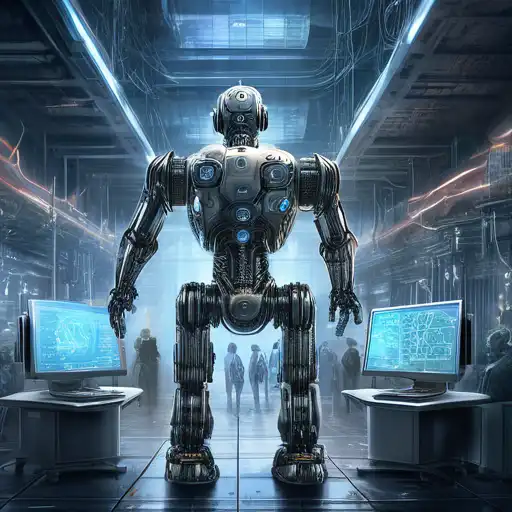Introduction to AI and Machine Learning
In the rapidly evolving world of technology, Artificial Intelligence (AI) and Machine Learning (ML) have emerged as two of the most groundbreaking advancements. While often used interchangeably, AI and ML are distinct concepts with unique applications and implications. This article delves into a comparative study of AI and ML, shedding light on their differences, similarities, and how they are shaping the future of technology.
Understanding Artificial Intelligence
Artificial Intelligence is a broad field of computer science focused on creating systems capable of performing tasks that typically require human intelligence. These tasks include problem-solving, understanding natural language, recognizing patterns, and making decisions. AI can be categorized into two types: Narrow AI, which is designed to perform a narrow task (e.g., facial recognition or internet searches), and General AI, which can perform any intellectual task that a human being can.
Understanding Machine Learning
Machine Learning, a subset of AI, involves the development of algorithms that allow computers to learn from and make predictions or decisions based on data. Unlike traditional programming, where humans write explicit instructions, ML algorithms improve their performance as they are exposed to more data over time. ML is further divided into supervised learning, unsupervised learning, and reinforcement learning, each with its unique approach to learning from data.
Key Differences Between AI and Machine Learning
While AI aims to simulate human intelligence across a broad range of tasks, ML focuses specifically on enabling machines to learn from data. Here are some key differences:
- Scope: AI encompasses a wider range of technologies and applications, whereas ML is specifically concerned with data-driven learning.
- Dependency: AI systems can operate without ML, but ML is a critical component of many AI systems.
- Learning: AI can be rule-based and not learn from data, while ML inherently involves learning from data.
How AI and Machine Learning Work Together
Despite their differences, AI and ML often work hand in hand to create intelligent systems. For example, AI applications like chatbots use ML to understand and respond to human language more effectively over time. Similarly, recommendation systems on platforms like Netflix or Amazon combine AI's broad capabilities with ML's data-driven insights to personalize user experiences.
The Future of AI and Machine Learning
The integration of AI and ML is set to revolutionize industries, from healthcare, where they can predict patient outcomes, to automotive, where they power self-driving cars. As these technologies continue to evolve, their potential to transform our world is limitless. However, with great power comes great responsibility, and the ethical implications of AI and ML must be carefully considered to ensure they benefit humanity as a whole.
Conclusion
AI and Machine Learning are two sides of the same coin, each playing a pivotal role in the advancement of technology. By understanding their differences and how they complement each other, we can better appreciate their potential to innovate and improve our lives. As we stand on the brink of a new era in technology, the possibilities are as vast as our imagination.
